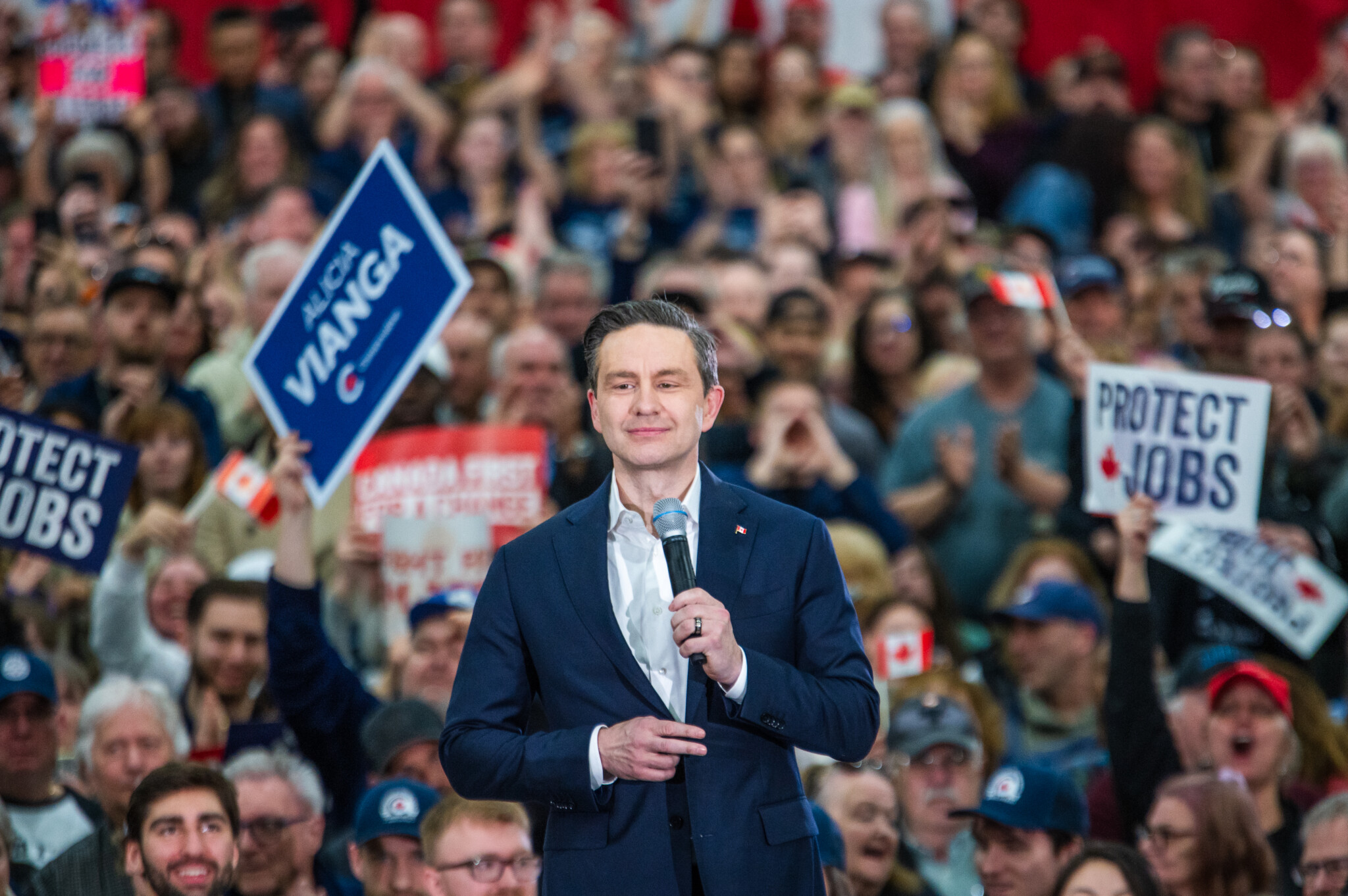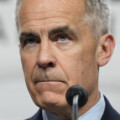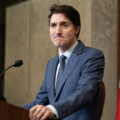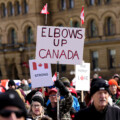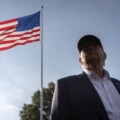The 2025 Conservative campaign was one that featured multiple realities.
In legacy media TV studios and editorial pages, you have a punditry class convinced Pierre Poilievre is about to lose, amidst piles of polls showing Mark Carney’s Liberals ahead.
But in farmers’ fields, warehouses, and factories across the country, Poilievre held historic rallies in the thousands, with attendees convinced something big is about to happen.
The polls
If you believe the polls, you believe the Liberals will win tonight.
As of Sunday night, the latest surveys from Abacus Data, Angus Reid, Cardinal, EKOS, Innovative, Léger, Liaison Strategy, Mainstreet, MQO, Nanos, Pollara, and Research Co all show Carney’s Liberals are on the verge of victory.
Polling Leads So Far
— Polling Canada (@CanadianPolling) April 28, 2025
🔴 EKOS +6
🔴 MQO +5
🔴 Cardinal +5
🔴 Research Co +5
🔴 Leger +4
🔴 Innovative +4
🔴 Angus Reid +4
🔴 Nanos +4*
🔴 Liaison +3*
🔴 Pollara +3
🔴 Abacus +2
🔴 Mainstreet +1*
(*Not Final Poll From Pollster)
Polling aggregator 338Canada estimates the Liberals will win between 147 and 218 seats, the Conservatives will claim 93 to 161, with 15 to 33 seats for the Bloc, seven for the NDP, and two for the Greens.
The odds of the Liberals winning the most seats stand at 89 percent.
“Hard to imagine anything but a Liberal majority on Monday night,” said founder and president of Mainstreet Research, Quito Maggi.
This is quite the reversal from the start of the year, when Poilievre had a 30-point lead.
The people
The rallies, however, tell a much different story. Attending a Polievre rally gives you the feeling that the lead never evaporated; that the Conservative leader is about to surf a blue tsunami across the country and form a majority government.
Poilievre’s election campaign events are truly something to experience in person, something I did from Saskatoon to Vancouver to Oakville. They are organized by the party but feel very grassroots.
To rallygoers, Poilievre is a rockstar. They scream when he takes the stage, cheer over top of each greatest hits slogans, strain to capture him in selfies, and rush his tour bus once the rally is over to shake his hand. They have placed their hopes and dreams in him.
Conservative Leader @PierrePoilievre received HUGE cheers when he took the stage in Oakville. The rally honestly felt more like a rock concert. pic.twitter.com/8VXZW3YUTf
— Élie Cantin-Nantel (@elie_mcn) April 28, 2025
The people who attend are diverse in age, race, and occupation. I spoke to young people, Boomers, and children. There were first- and second-generation Canadians, “old-stock” Canadians, people with disabilities, and Indigenous Peoples. There were tradespeople, teachers, and white collar individuals.
But what nearly all had in common was that they do not believe the polls. They believe Poiievre will win a majority today.
“It will be without a doubt a landslide,” one rallygoer in Saskatoon told me. “It’s just like the United States, where Trump wasn’t gonna win. Everything’s happening in Canada exactly like it happened in the States.”
During the 2016 U.S. election, Reuters and Ipsos even gave Hillary Clinton a 90 percent chance of winning. Trump ended up winning 304 electoral votes, while Clinton won 227.
And Poilievre’s supporters believe the same thing is happening here. While they will be the first to tell you Poilievre is not like Trump, they also believe liberal elites are underestimating Poilievre, just like they underestimated Trump in his first run for the White House.
One could argue his supporters may believe more in Poilievre’s chances than some of the people on his own campaign. To them, they measure success not by high poll numbers, but by the number of rallygoers that pack rooms across the country.
The major gamble
The Conservatives made a major gamble this election.
The legacy media believed that in the face of Donald Trump, Poilievre needed to pivot away from his signature campaign themes and take Trump head-on, in an effort to woo new voters. But that’s not what they did.
Instead, they doubled then and tripled down on their original agenda.
Poilievre’s rally speeches had little mention of tackling Trump, but mentions of things like defunding foreign aid and taking on woke universities meant he continued to be compared to the U.S. president.
Over the past three years, Poilievre has built a unique coalition of Canadians from coast to coast to coast. People who are fed up with the status quo after 10 years of Liberal governance.
And these are the people who are showing up at his rallies and have held the Conservative popular support steady throughout this campaign.
The party seemed to believe it did not need to further broaden its tent. That it didn’t need to spend more time convincing, but instead solidify its rock-solid base. That there were enough people who were finding the current message resonating, and that these people simply needed to get out and vote like never before.
The big bet is that this new base of supporters of middle and working class voters, Gen Z and Millennials, and immigrants, will get out and vote in greater numbers than the pro-Carney coalition of baby boomers, NDP, and Bloc Québécois switchers.
And that is what will defy the polls and bring the Conservatives to a victory come Monday.
The Conservative campaign manager, Jenni Byrne, has a reputation for being good at the ground game, and today will be the ultimate final test of this.
The campaign is currently bipolar. But tonight, the polls and the people will coalesce at the ballot box.
Travel expenses for The Hub’s election coverage are made possible by the Public Policy Forum, the Rideau Hall Foundation, and the Michener Awards Foundation
